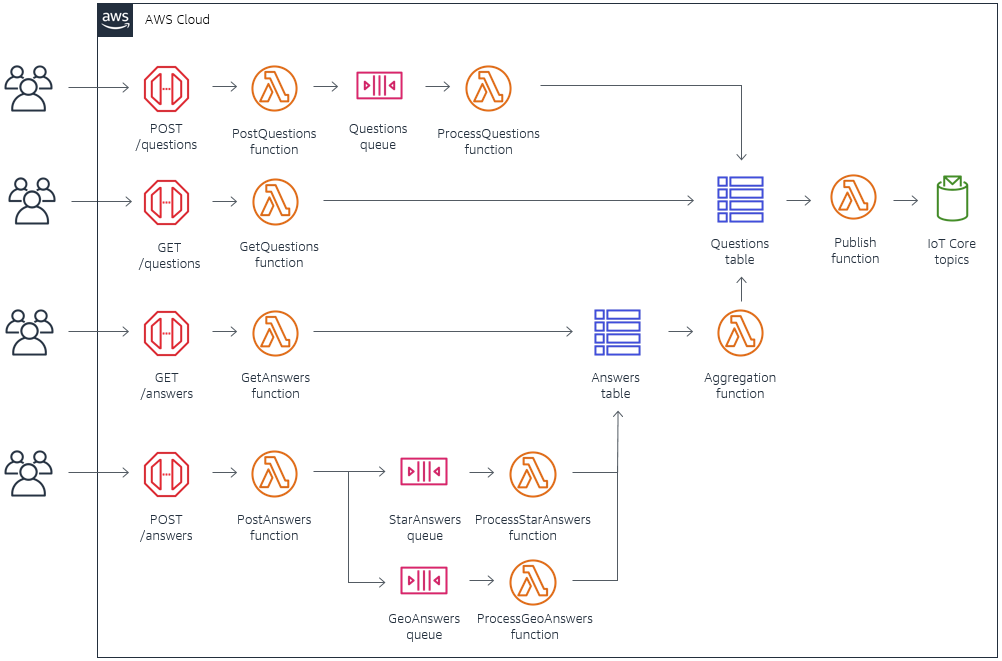AWS Compute Blog
Using Amazon EFS for AWS Lambda in your serverless applications
Serverless applications are event-driven, using ephemeral compute functions to integrate services and transform data. While AWS Lambda includes a 512-MB temporary file system for your code, this is an ephemeral scratch resource not intended for durable storage. Amazon EFS is a fully managed, elastic, shared file system designed to be consumed by other AWS services, […]
Upgrading to Amazon EventBridge from Amazon CloudWatch Events
EventBridge is the evolution of the CloudWatch Events service. It brings new features, including the ability to integrate data from popular SaaS providers as events within AWS.
Visualizing Amazon API Gateway usage plans using Amazon QuickSight
In this post, I walk through configuring streaming of API access logs from Amazon API Gateway to Amazon S3 via a Kinesis Firehose delivery stream.
Building a location-based, scalable, serverless web app – part 3
In part 2, I cover the API configuration, geohashing algorithm, and real-time messaging architecture used in the Ask Around Me web application. These are needed for receiving and processing questions and answers, and sending results back to users in real time. In this post, I explain the backend processing architecture, how data is aggregated, and […]
Building a location-based, scalable, serverless web app – part 2
This post explores the backend architecture of the Ask Around Me application. I compare the cost and features in deciding between REST APIs and HTTP APIs in API Gateway. I introduce geohashing and the npm library used to handle geo-location queries in DynamoDB. And I show how you can build real-time messaging into your web applications using the publish-subscribe pattern with AWS IoT Core.
Building a location-based, scalable, serverless web app – part 1
In this post, I introduce the Ask Around Me example web application. Learn to build a serverless realtime, Vue.js web app in part 1 of this series.
Building scalable serverless applications with Amazon S3 and AWS Lambda
S3 and Lambda are two highly scalable AWS services that can be powerful when combined in serverless applications. In this post, I summarize many of the patterns shown across this series.
Best practices for organizing larger serverless applications
This blog post provides recommendations for designing and managing code repositories in larger serverless projects, and best practices for deploying releases of production systems.
Using dynamic Amazon S3 event handling with Amazon EventBridge
The standard S3 to Lambda integration enables developers to deploy code that responds to bucket- or object-based events. Using Amazon EventBridge, you can employ even more sophisticated routing and filtering of events between S3 and Lambda.
Creating a scalable serverless import process for Amazon DynamoDB
Amazon DynamoDB is a web-scale NoSQL database designed to provide low latency access to data. It’s well suited to many serverless applications as a primary data store, and fits into many common enterprise architectures. In this post, I show how you can import large amounts of data to DynamoDB using a serverless approach. This uses […]









